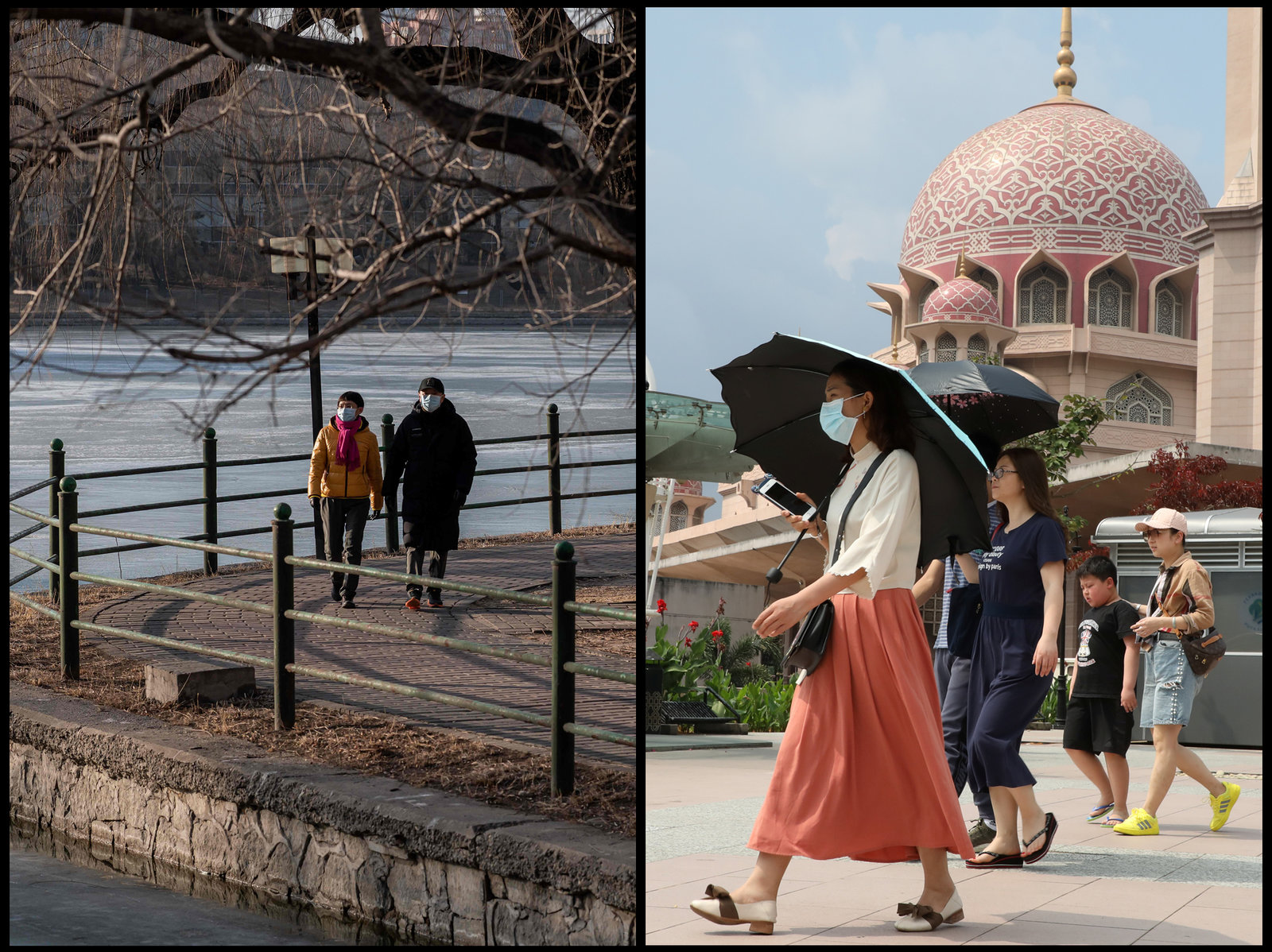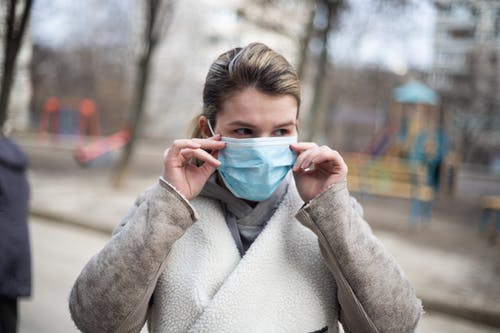科学家们试图弄清楚夏季是否会减缓COVID-19的传播
科学家们试图弄清楚夏季是否会减缓COVID-19的传播
The worst outbreaks of COVID-19 so far have been in colder parts of the Northern Hemisphere during winter or early spring. Will warmer weather slow the transmission?
到目前为止,在冬季或早春时,北半球的较冷部分地区发生了最严重的COVID-19疫情。天气会减缓传播速度吗?
Could the Southern Hemisphere see outbreaks intensify as that part of the globe moves into winter?
随着南半球进入冬季,疫情会加剧吗?
And is it possible that transmission might be naturally interrupted as it is each year for the seasonal flu?
是否有可能像每年季节性流感那样自然地中断传播?

These are some of the key questions about COVID-19 that scientists are trying to answer.
这些是科学家们试图回答的关于COVID-19的一些关键问题。
"The seasonality of flu and other respiratory viruses has been known for hundreds of years, if not thousands," says Akiko Iwasaki, a professor of immunobiology at the Yale University School of Medicine. "During the winter months we tend to have a surge in the cases of respiratory infection, including the influenza viruses."
耶鲁大学医学院免疫生物学教授岩崎昭子说:“流感和其他呼吸道病毒的季节性即使不是几千年,也有几百年的历史了。”“在冬季,包括流感病毒在内的呼吸道感染病例往往会激增。”
There are a number of factors that contribute to why the flu arrives in the winter but Iwasaki says the primary factor is the relative humidity of the air. In winter the drop in the amount of water vapor in the cold dry air makes it easier for viruses to become airborne.
造成冬季流感的原因有很多,但岩崎说最主要的因素是空气的相对湿度。在冬天,寒冷干燥的空气中水蒸气含量的下降使得病毒更容易通过空气传播。
This makes what Iwasaki calls the "perfect setting" for respiratory viruses to transmit.
这就是岩崎所说的呼吸道病毒传播的“完美环境”。
"When you cough or sneeze or even talk, you're generating these droplets that are coming out of your mouth," she says. "And some of them, if you're infected, will contain virus particles.
她说:“当你咳嗽、打喷嚏甚至说话的时候,你的口腔里就会产生这些飞沫。”“如果你被感染了,其中一些会含有病毒颗粒。
In very arid conditions, those particles lose the water vapor and they become airborne." This allows the virus to persist in the air for a long time, much longer than in summer.
在非常干旱的条件下,这些颗粒会失去水蒸气,飘在空中。”这使得病毒可以在空气中存活很长时间,比夏天长得多。
"This novel coronavirus is a cousin of the coronaviruses that are circulating in humans and just causing the common cold," she says. "So the property of the virus is likely to be similar to the common cold version of the coronavirus. So I would expect that this [new] coronavirus can also stay in the air better at lower relative humidity, meaning the indoor conditions that you find in the winter months." Meaning that it would be more likely to spread in winter.
她说:“这种新型冠状病毒是在人体内传播的冠状病毒的近亲,只会引起普通感冒。”因此,这种病毒的特性很可能与普通的感冒病毒相似。因此,我预计这种新型冠状病毒在相对湿度较低的情况下也能更好地留在空气中,这意味着它更有可能在冬季传播。
The World Health Organization and the U.S. Centers for Disease Control and Prevention in their guidance on SARS-CoV2 downplay airborne spread, saying instead that the primary form of transmission is by "large respiratory droplets."This debate – airborne vs. droplets — is a crucial divergence in thought when it comes to figuring out if COVID-19 is going to be seasonal. If the primary form of transmission is airborne, then the novel coronavirus could become a seasonal disease. If it mainly spreads through "large respiratory droplets" then seasonality is less likely.
世界卫生组织和美国疾病控制与预防中心在关于SARS-CoV2的指导意见中淡化了空气传播的重要性,称主要的传播形式是通过“大的呼吸液滴”。关于COVID-19是否会随季节变化,这场争论—空气传播还是液滴传播,是一个重要的思想分歧。如果传播的主要形式是空气传播,那么这种新型冠状病毒可能成为一种季节性疾病。如果它主要通过“大的呼吸液滴”传播,那么就不太可能是季节性疾病。

The transmission through "large respiratory droplets" works this way. When an infected person sneezes or coughs, virus-laden spittle flies out into the air. The particles, which may even be big enough to see, don't go very far: WHO estimates they travel about 3 feet before dropping onto surfaces directly around the infected person.
通过“大呼吸液滴”的传播是这样的。当感染者打喷嚏或咳嗽时,携带病毒的唾沫会飞到空中。这些颗粒甚至可能大到可以看到,但不会飞得太远:世卫组织估计,它们在直接落到感染者周围的表面之前,会飞行约3英尺。
According to this model, if a person with COVID-19 is eating in at restaurant, they're far more likely to infect someone at their table than someone across the room.
根据这个模型,如果一个患COVID-19的人在餐馆吃饭,他传染给同桌的人的可能性比传染给房间另一头的人的可能性要大得多。
So if the new coronavirus primarily spreads this way on large droplets, seasonality may not matter.
因此,如果新的冠状病毒主要通过大液滴传播,那么季节性可能就不重要了。
Ben Cowling, an epidemiologist at the University of Hong Kong, also says warm temperatures haven't seemed to have stopped the spread of this virus.
香港大学的流行病学家本·考林也表示,温暖的气温似乎并没有阻止这种病毒的传播。
Even in the U.S. southern states like Florida and Louisiana have been hard-hit along with colder states like New York and Michigan.
甚至在美国,南部的佛罗里达州和路易斯安那州以及较冷的纽约州和密歇根州也受到了严重的打击。
But the worst outbreaks so far globally have been in cooler locations. So as the Southern Hemisphere moves into winter, researchers will be watching closely whether transmission of SARS-CoV2 increases in South America, Africa and Oceana as the temperature drops.
但到目前为止,全球最严重的疫情发生在温度较低的地区。因此,随着南半球进入冬季,研究人员将密切关注南美、非洲和大洋洲的SARS-CoV2传播是否会随着气温下降而增加。
- 频道推荐
- |
- 全站推荐
- 推荐下载
- 网站推荐


















